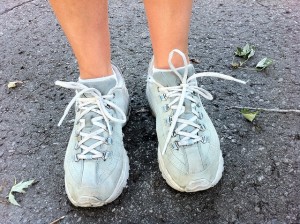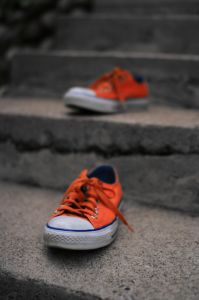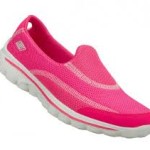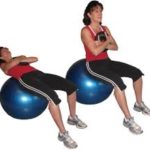 Have you ever had to turn around and go home because your shoes hurt? Did you know that wearing the wrong walking shoes can trigger repetitive injuries that will sideline you for weeks, even without knowing they are happening?
Have you ever had to turn around and go home because your shoes hurt? Did you know that wearing the wrong walking shoes can trigger repetitive injuries that will sideline you for weeks, even without knowing they are happening?
Wearing the right shoes when you go walking is imperative. Not all shoes are good for walking and some are even made to be comfortable but don’t offer the support you need for fitness walking.
There are several factors that you should look for in a shoe that is built specifically for walking. Once you pick a shoe that meets these structural prerequisites, then you can try them on and figure out if the fit is right. So, let’s not start with fit, but rather form.
Walking shoes should be flexible in the forefoot. This means that the shoe should bend easily at the front of the shoe where the ball of your foot sits. Take the shoe in your hand at the heel and with the toe on a hard surface, press down. Watch where the shoe breaks, or bends. If it bends easily a the forefoot, or the front of the shoe, then it’s flexible enough to go walking.
The shoe should also have a low heel. Running shoes can be built slightly differently, with a higher heel, because that will support the runner who lands on the ball of his foot so the impact is distributed through the foot and leg appropriately. However, the walker will land heel first and needs a shoe that has a low heel to distribute his weight throughout the foot and decrease the load on the ankle and knee.
Most running shoes are built with a flared heel to offer the runner more stability. This is especially true for trail running shoes. But walkers need a heel with no flare, or is slightly undercut. This means that the heel is angled inward slightly. The flared heel doesn’t increase stability for the walker but can change the way the foot hits the ground while fitness walking. Because most shoes are built with a flared heel, most of the time you should be happy if you find a shoe with a straight heel cut.
 Another factor is an Achilles notch in the back of the shoe. This will reduce the stress on your Achilles tendon while you are pacing yourself through an intense walk. The toe box on the shoe should also be wide enough to accommodate your needs. Some of us have narrow feet and others have wide feet – but either way your feet may swell during the walk. Be sure that the shoes are wide enough to accommodate your feet.
Another factor is an Achilles notch in the back of the shoe. This will reduce the stress on your Achilles tendon while you are pacing yourself through an intense walk. The toe box on the shoe should also be wide enough to accommodate your needs. Some of us have narrow feet and others have wide feet – but either way your feet may swell during the walk. Be sure that the shoes are wide enough to accommodate your feet.
A walking shoe should also have factors that account for your individual needs. For instance, if you need motion control or more stability. Most running shoe shops can analyze your gait and make recommendations for you about what you should have included in the shoe you wear.
An ‘accessory’ might be good ankle padding to keep your heel and ankle in place while walking quickly. If your shoe doesn’t have great padding you can increase the stability of your heel by changing the way you tie your shoes.
If you plan on walking through hilly terrain or hiking in your shoes, look for walkers with a higher ankle to protect your joint and sole grips to keep your feet on the trail. Some walking shoes for trail walking will also have reinforced toe areas for protection.
Resources:
Prevention: Top 10 Best New Walking Shoes
http://www.prevention.com/fitness/fitness-tips/top-10-best-new-walking-shoes
MayoClinic: Walking Shoes: Features that fit that keep you moving
http://www.mayoclinic.org/healthy-living/fitness/in-depth/walking/art-20043897
University of IL: Choosing a Walking Shoe
http://www.campusrec.illinois.edu/wellnesscenter/iWalk/shoes.html


Leave a Reply